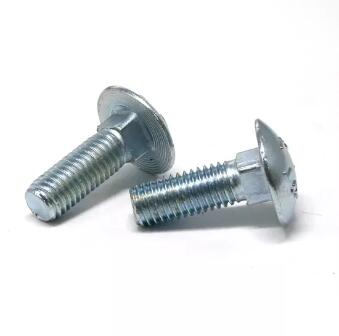Bolts Unveiled: A Guide to Understanding Strength Classifications
2023-11-20
Introduction
Bolts are the backbone of structures, providing the essential connection points that ensure stability and reliability. However, not all bolts are created equal, and understanding their strength classifications is crucial for selecting the right fasteners for a particular application. In this blog post, we will unravel the mysteries behind how bolts are classified based on their strength, shedding light on the markings and standards that govern this essential aspect of construction and engineering.
1. Understanding Tensile Strength: The Core Parameter
Tensile strength is a key metric used to classify bolts. It refers to the maximum amount of tensile (pulling) force a bolt can withstand without breaking. Bolts are often marked with a numerical value, indicating their tensile strength in pounds per square inch (psi) or mega pascals (MPa). The higher the number, the greater the tensile strength.
2. Common Strength Classes: Grades in Carbon Steel Bolts
In carbon steel bolts, the strength classification is typically denoted by a grade. The most common grades are:
- Grade 2: These bolts have a low tensile strength and are suitable for general applications with minimal load requirements.
- Grade 5: Offering a moderate level of tensile strength, Grade 5 bolts are commonly used in automotive and machinery applications.
- Grade 8: High-strength bolts, Grade 8 fasteners are used in demanding applications, such as heavy machinery and construction equipment.
3. Metric Property Classes: Strength Markings on Metric Bolts
For metric bolts, the strength classification is expressed through property classes. Common property classes include:
- Property Class 4.6: Bolts in this class have a tensile strength of 400 MPa and are suitable for general-purpose use.
- Property Class 8.8: With a higher tensile strength of 800 MPa, bolts in this class are used in applications requiring more strength, such as structural connections.
- Property Class 10.9: Bolts in this class boast a tensile strength of 1000 MPa and are utilized in critical structural and machinery applications.
4. Alloy Steel Grades: Enhanced Strength and Toughness
In addition to carbon steel, alloy steel bolts are classified based on their strength. Alloy steel grades may include:
- ASTM A193 Grade B7: Known for its high tensile strength, Grade B7 bolts are commonly used in high-temperature and high-pressure applications, such as in the oil and gas industry.
- ASTM A325: These bolts are specifically designed for structural steel connections and are available in Type 1 and Type 3 configurations, with Type 3 providing corrosion resistance.
5. Stainless Steel Strength: Strength in Corrosive Environments
Stainless steel bolts, while known for their corrosion resistance, also come in various strength classes. Common stainless steel grades include:
- A2 (304): Offering good corrosion resistance and moderate strength, A2 bolts are suitable for general applications.
- A4 (316): With enhanced corrosion resistance, A4 bolts are often used in marine and coastal environments where exposure to saltwater is a concern.
Conclusion
In the world of bolts, strength is a paramount consideration. Understanding the classification systems, whether based on grades, property classes, or specific alloy designations, empowers engineers and builders to make informed decisions about the fasteners they use. The next time you embark on a construction project or find yourself in need of reliable connections, consider the strength classifications of bolts to ensure the safety and longevity of your structures. After all, a solid foundation begins with the right bolts in place.



